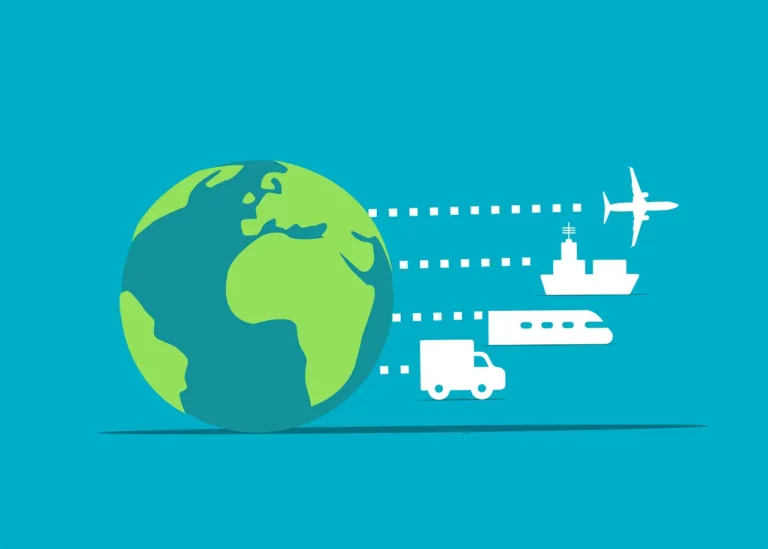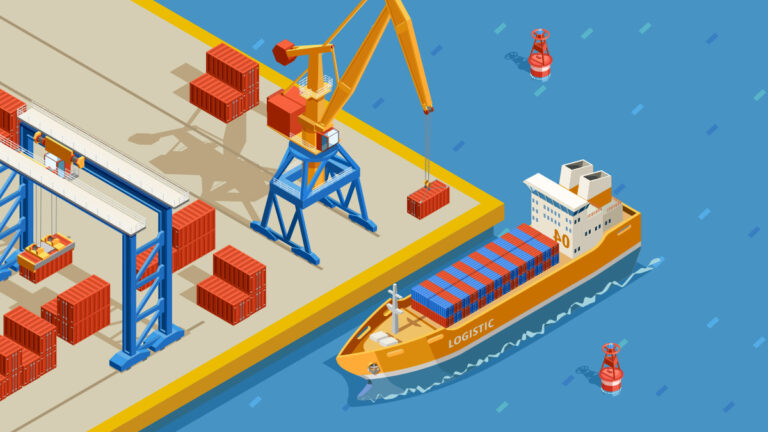Comprehensive Guide to Shipping from US to Canada
With its diversified population and growing economy, the Canadian market attracts a lot of US companies and individuals. In fact, as of 2022, trade between the United States and Canada was valued at over $3.4 billion, making it one of the world’s largest trade relationships. With the US sharing a border with Canada, it is safe to say that exciting opportunities arise when it comes to shipping from the US to Canada, but handling customs, duties, and logistics can be challenging. And the only way to overcome these challenges is firstly knowing that you’ll be playing a different ball game altogether.
Understanding Shipping Options
It’s quite important to know your shipping alternatives for shipments from the US to Canada. It gives you the ability to strike a compromise between client needs, cost, and time for a seamless, effective delivery experience that makes everyone happy.
Pros and Cons of Different Shipping Methods
Selecting the best shipping option doesn’t have to be difficult, even though navigating the US-Canada shipping market may seem like a challenging undertaking. Let’s examine the various shipping options and assess their benefits and drawbacks so you can decide which is best for your particular requirements.
Ground Freight
Ground freight refers to the transportation of goods overland, typically using trucks, across designated routes. This method delivers directly to the recipient’s location but involves longer transit times compared to other options.
Pros
- The most affordable option, especially for larger shipments.
- Convenient, as it provides door-to-door delivery and eliminates additional pick-up or drop-off steps.
- It offers a wide range of carriers, and you can choose from established players like FedEx and USPS or specialised private couriers.
Cons:
- Patience is key, as shipments can take several days to weeks.
- Delays due to storms or road closures are possible.
- Compared to air freight, real-time location updates might be less frequent.
Air Freight:
Air freight involves transporting goods via airplanes, offering the fastest delivery option between the US and Canada but with limitations on weight capacity and higher costs associated with the speed.
Pros:
- It is perfect for last-minute deliveries, arriving to destinations in a few of days
- Major carriers like FedEx and DHL offer global reach.
- It is frequently regarded as a more secure choice for valuable goods.
Cons:
- The premium price tag can significantly impact your budget.
- Not suitable for oversized or extremely heavy shipments.
- Air travel disruptions can impact delivery times.
Sea Freight:
Sea freight utilises container ships to transport large quantities of goods across the ocean, making it the most economical option for bulk shipments.
Pros:
- The most cost-effective option for large-scale shipments.
- Ideal for transporting bulk goods and heavy machinery.
- Compared to air freight, the carbon footprint is significantly lower.
Cons:
- Shipments can take weeks or even months to arrive.
- Real-time location updates might be unavailable for the entire journey.
- Delays due to busy ports or customs clearance are possible.
Overview of Shipping Options
Choosing between multiple carriers for your US-Canada shipment can feel a bit overwhelming. But for better understanding, we’ll be breaking down the options to help you choose the perfect partner for your shipping needs.
FedEx
With a range of shipping choices from the lightning-fast but more expensive Express services to the more affordable but slower Ground Economy, FedEx is well-known for its dependability and speed. It is the best option for high-value items, shipments with a tight deadline, and delivering papers. FedEx can handle larger packages well, but Ground Economy can handle smaller shipments more effectively. Choosing FedEx’s Express services guarantees dependable and quick delivery when timing is of the essence.
USPS
Recognised for its consistently dependable services, USPS offers affordable options including Parcel Select International and Priority Mail International. It works well for handling paperwork, minor items, and non-urgent shipments. For minor packages, USPS is a good option when selecting a carrier, and it also provides good options for larger items. USPS allows you to track your shipment and is suitable for packages that must arrive quickly, USPS might not be the fastest, but for deliveries that are just somewhat urgent, it guarantees dependable services.
Private Couriers
In addition to FedEx and USPS, there are multiple private carriers as well which you can consider for your shipping options. Each of the private carriers would have their own pros and cons and doing a thorough research on which career suits your needs the best is an important step to consider before shipping. Specialised cargo and urgent shipments are best served by DHL, which is well-known for its vast worldwide network and experience in expedited delivery. Due to its strong skills, it is a great choice when industry knowledge and timeliness are crucial.
Time-sensitive domestic shipments are best served by Purolator, a Canadian powerhouse that specialises in ground freight and same-day deliveries within Canada. Purolator’s ground freight alternatives offer a dependable solution for large or bulky commodities, guaranteeing effective transportation within Canada.
UPS distinguishes itself by providing an extensive array of flexible ground and air freight choices, demonstrating proficiency in global shipping, and catering to a wide range of requirements. UPS has a solid reputation and offers dependable services to consumers and organisations who need a variety of delivery options.
To help you chart a smoother course, you can also check out the top container ports in the US, revealing their strengths and how they can impact your US-Canada shipment.
Comparing FedEx, USPS, and Private Couriers
FedEx and USPS are two well-known companies that serve diverse purposes, each with its own advantages and disadvantages. Let’s examine their qualities, taking into account things like price, dependability, speed, tracking capabilities, and extra services all the while being open to private players as well.
Cost:
USPS: When it comes to smaller shipments weighing less than two pounds, USPS wins the budget war. Competitive pricing is available with monitoring and insurance included when using options like Priority Mail International. However, expenses may increase faster with larger shipments.
FedEx: Given their speed and range of services, be prepared to pay a premium price. Ground Economy provides affordable options, but Express services are rather expensive. Think about the bulk discounts they offer to regular shippers.
Reliability:
USPS: With years of experience and a large network, USPS offers dependable delivery. Standard delivery times, however, may take longer than FedEx’s.
FedEx: Well-known for dependability and punctuality, particularly when it comes to assured deliveries via their Express alternatives. Their extensive global network guarantees a greater reach and reliable service.
Speed:
USPS: Although it is slower than FedEx but still quicker than regular choices, Priority Mail International delivers packages in 6–10 business days. At a higher cost, Priority Mail Express International is a viable option for expedited delivery.
FedEx: FedEx is the unchallenged leader in speed, with Express options including International Priority that can be delivered in a matter of days. Perfect for urgent demands and shipments with a tight deadline.
Tracking:
USPS: Offers location updates and basic tracking along with projected arrival dates. Detailed scans may be less common than FedEx.
FedEx: Provides proactive exception notifications for possible delays, signature confirmation, and comprehensive tracking with real-time updates.
Additional Services:
FedEx: Offers a greater choice of value-added services, such as help with customs clearance, customised packaging, and alternatives for high-value products insurance.
USPS: Offers limited additional services beyond basic shipping. Consider partnering with a customs broker for complex clearance needs.
Considering your priorities is crucial when selecting the right shipping option for US-Canada shipments. For economical choices for packages under 2 lbs, USPS is a reliable option. If you prioritise speed and guaranteed deliveries, FedEx is a suitable choice. For a balance between cost and speed, USPS Priority Mail International could be a practical solution. In cases of specialised cargo or complex customs, private couriers with industry expertise may provide tailored solutions. Remember to research each carrier’s options and compare them to find the most suitable fit for your specific shipping needs.
Navigating Customs, Duties, and Taxes
Shipping from the US to Canada involves more than just choosing a carrier. Understanding customs procedures, duties, and taxes is crucial for a smooth and cost-effective journey. Let’s delve into the essential information you need to know:
Understanding Customs Procedures
When shipping from US to Canada, the customs process involves several key steps to ensure smooth clearance and optimized freight management:
Prepare necessary documentation: Before shipping, gather commercial invoices, bills of lading, packing lists, and proof of origin. Ensure all details are accurate and complete to avoid delays during customs clearance. Make sure to provide truthful information about your shipment’s value and contents to avoid penalties.
Declare your goods: Utilise the CBSA eManifest system to electronically submit shipment details. This step is vital for efficient assessment and processing by CBSA.
Pay any applicable duties and taxes: Calculate duties and taxes beforehand to prevent delays. Prompt payment ensures smooth customs clearance.
Clearance: Upon submission of documentation and payment, your shipment may undergo physical inspection based on factors like value, contents, and perceived risk. Make sure to keep all required paperwork neatly organised and easily accessible for inspection by customs officials. This includes commercial invoices, bills of lading, and any other relevant documents.
Delivery: Once cleared, your shipment is released for delivery to its Canadian destination.
If you’re dealing with complex shipments or unfamiliar with the customs process, consider enlisting the services of a customs broker. These professionals can navigate the complexities of customs regulations and expedite the clearance process on your behalf.
Calculating Duties and Taxes
The two most important things to know about customs for shipping from US to Canada are duties and taxes. Based on the Harmonised System (HS) categorization of your products, duties are effectively the Canadian government’s application of a percentage of the shipment’s value. The sort of products you’re sending and the nation of origin will determine the exact cost you pay. This implies that goods made in Mexico under NAFTA may have lower or even no duties when compared to goods from other nations, and that a shipment of furniture will have a different duty rate than a cargo of clothes.
You’ll also need to account for taxes in addition to duties. Canada imposes the Goods and Services Tax (GST) and/or the Harmonised Sales Tax (HST) depending on the province your shipment is headed for, just like the US does with sales tax. When estimating your total shipping expenses, don’t forget to include these taxes, which are normally imposed on top of the computed charges.
Although the precise figures may appear intimidating, figuring out duties and taxes doesn’t have to be a difficult undertaking. A useful online duty and tax calculator tool is available on the Canada Border Services Agency (CBSA) website. It may provide you an estimate depending on the details of your particular cargo. It’s crucial to keep in mind that these are only estimates and that the real rates may differ slightly. You’ll need to look further into the HS tariff schedule to determine the exact classification code for your goods in order to do more accurate calculations. The precise duty and tax rates you will be subject to will be determined by this code, the origin, and the value of your shipment. Keep in mind that these rates could vary, so before completing your calculations, make sure you double-check the CBSA website for the most recent details.
Logistical Considerations for International Shipping
Selecting a carrier is not the only step in moving your personal or commercial belongings from the US to Canada. Comprehending the diverse logistical factors is important to guarantee a seamless and effective shipping process.
Packaging and Size Limitations
Packing expertly can make a big difference in the secure and undamaged delivery of your goods during shipping. To secure your items during transit, start by selecting sturdy boxes and making sure they are well cushioned. Furthermore necessary to avoid any unintentional openings are secure closures. It’s also important to look into carrier-specific policies about permitted dimensions and materials for packaging. To prevent any problems during shipment, it’s crucial to follow these instructions as specific criteria may vary depending on the carrier. Furthermore, take note of any weight and size limitations as going over them may incur extra costs or perhaps result in the package being refused. For specific restrictions depending on the service you have selected, visit the carrier’s website or get in touch with them directly. To ensure a secure and safe delivery, take into consideration the specialised container options provided by shipping firms for huge or unusually shaped objects. By using these packing suggestions and keeping in mind the particular requirements of your package, you may increase the likelihood of a smooth and successful delivery process.
Estimated Delivery Times and Tracking
Keeping yourself informed and having a clear timeline are crucial to running a successful shipping operation. Different shipping methods have different speeds available; air freight prioritises speed at a higher cost, whereas ground solutions are more affordable but take longer to reach their destination. Knowing when deliveries are expected will help you control expectations and make plans appropriately. Furthermore, the majority of carriers offer online tracking facilities that let you keep track of the status of your package in real time. This openness not only gives you peace of mind but also makes it possible to foresee any delays and take appropriate action early on. From beginning to end, you can make sure that shipment goes smoothly and efficiently by keeping yourself informed and making use of tracking tools.
Addressing Potential Shipping Delays
Effective communication, proactive planning, and forward thinking are essential elements of a successful shipping business. To prevent last-minute rushes, it’s important to account for potential delays when setting deadlines, such as weekends, holidays, and customs clearing timeframes. It’s critical to select reputable carriers with a track record of on-time delivery; when choosing your shipping option, take into account probable customs complications and weather forecasts. Furthermore, timely updates and informing recipients of any unforeseen delays depend heavily on efficient communication. Communication that is open and honest promotes connections and trust, which makes shipping easier for everyone concerned. These techniques can help you transport more efficiently, reduce hazards, and deliver products in an ethical and timely manner.
Impact of Weather and Environmental Factors
The shipping landscape is greatly influenced by environmental constraints as well as the power of Mother Nature. Natural calamities, intense heat waves, or winter storms can all interfere with transportation plans, leading to delays and logistical difficulties. It’s critical to keep up with weather forecasts and select transportation modes, whether it’s air freight or ocean freight that are less vulnerable to these kinds of disruptions. Furthermore, restrictions on specific commodities, especially dangerous materials or things that are sensitive to the environment, may be imposed by environmental rules. It is essential to investigate these limitations and abide by them in order to guarantee legal compliance and avoid any fines or delays. Even in the face of outside obstacles, shippers can reduce risks and preserve seamless operations by proactively taking these considerations into account and implementing the necessary actions.
Customs and Border Clearance
A good shipping operation requires proper documentation. It is crucial to make sure that all required documentation, including bills of lading, customs declarations, and commercial invoices, is correct and comprehensive. Both time and resources may be impacted by incomplete or inaccurate documentation, which may also result in delays and extra costs. It is advisable to obtain assistance from a customs broker for complicated cargo or unknown rules. Their knowledge may reduce any delays and speed up the clearance procedure, giving efficiency and peace of mind. Furthermore, being truthful is essential when stating the contents or value of your shipment. Although it may seem tempting to understate these details, doing so can result in costly fines and penalties. Thus, in order to steer clear of legal problems and guarantee a seamless shipping experience, transparency and truthfulness in declarations are essential.
Cost-Effective Shipping Strategies for Shipping from US to Canada
Cost-effective shipping from US to Canada doesn’t have to be daunting or budget-breaking. By employing some strategic tactics and practical approaches, you can efficiently manage your shipping expenses without compromising on quality. Here are some sensible strategies to keep your costs in check:
Reducing Shipping Costs
Carrier Comparison: Research and compare rates offered by various carriers such as FedEx, UPS, USPS, and private couriers. Consider factors like speed, reliability, and additional services to find the best fit for your budget and requirements.
Service Selection: Balance cost and urgency by choosing the most suitable shipping service. While air freight offers speed, ground options often provide significant cost savings for less time-sensitive shipments.
Packaging Optimization: Invest in lightweight packaging materials and optimise box sizes to minimise dimensional weight, a significant cost factor for many carriers. Utilise void-fill solutions that don’t add unnecessary weight to your packages.
Consolidate Shipments: Combine multiple smaller shipments into one larger one whenever possible to reduce per-item shipping costs. Planning ahead and consolidating shipments can lead to substantial savings, especially for frequent shippers.
Embrace Technology: Take advantage of online shipping and tracking tools and discount programs offered by carriers. Stay informed about volume discounts, promotional offers, and loyalty programs to maximise savings.
Streamline your US-Canada shipping with GoComet’s freight negotiation tool- GoProcure. Get the best deal every time & enjoy hassle-free customs clearance with their user-friendly platform & expert support.
Seek Professional Guidance: For complex shipments or intricate customs procedures, partnering with a customs broker can save time, money, and potential headaches. Their expertise can streamline the process and ensure compliance with regulations without unnecessary expenses.
Prohibited and Restricted Items
Getting your goods across the border from the United States to Canada requires more than just picking a reliable carrier and packing well. It is vital to comprehend and comply with legislation about forbidden and restricted commodities in order to guarantee a seamless and trouble-free shipping experience.
Commonly Prohibited Items:
Dangerous goods: Explosives, flammable liquids, hazardous materials, and other items deemed dangerous for transport are strictly prohibited.
Food and agricultural products: Restrictions exist on various meat, dairy, plant, and animal products due to biosecurity concerns. Check the CBSA website for specific details and any required permits.
Weapons and firearms: Importing firearms and certain weapons requires permits and registration with the Royal Canadian Mounted Police (RCMP).
Counterfeit goods: Goods infringing on intellectual property rights, like fake designer items, are prohibited.
Live animals: Subject to permits and health certificates from both the USDA and the Canadian Food Inspection Agency (CFIA).
Restricted Items:
- Prescription drugs: Require a prescription from a Canadian doctor and may be subject to quantity limitations.
- Used mattresses and cushioning: Strict regulations exist due to potential biohazards.
- Used tires: Subject to specific conditions and require written permission from the Canadian Minister of Environment.
- Gambling devices: Importing casino equipment or lottery tickets for commercial purposes is prohibited.
The primary resource for understanding import laws and limits into Canada is the Canada Border Services Agency (CBSA). Their website offers importers essential information by providing extensive lists of restricted and prohibited commodities that may be searched by category or keyword. Additionally, understanding the Harmonized System (HS) classification is essential, as goods are categorised under specific HS codes, determining their admissibility and potential restrictions. Knowing the HS code that applies to your item will help you comply with customs laws in an educated manner.
Tips for First-Time International Shippers
Taking up international shipping can seem intimidating, particularly if Canada is your first destination. However, with the right planning and guidance, your cross-border trip can go well. Here are some important pointers to remember:
Know Your Carrier: Invest some time in investigating and contrasting various shipping companies, including FedEx, UPS, USPS, and private couriers. Take into account elements like cost, speed, dependability, and other services provided.
Take Care When Documenting: When it comes to paperwork, accuracy is essential. To prevent delays and fines, make sure all of your documentation—such as bills of lading, permits, customs declarations, and business invoices—is accurate and comprehensive.
Pack Wisely: Make use of robust boxes, appropriate padding, and tight closures. Examine the packaging requirements particular to each carrier to prevent paying more for weight and dimensions.
Make Use of Technology: Make use of the online shipping tools and services that customs officials and carriers offer. These technologies enable efficient replies to your questions, real-time tracking, and process streamlining.
Recognise Duties and Taxes: Learn about any possible taxes and duties that may apply to your items. To prevent financial surprises, make use of tools such as the Canada Border Services Agency (CBSA) website, which offers duty calculators and estimator.
Handle Customs Sensibly: If you are inexperienced with rules or have complicated shipments, you might want to see a customs broker. Their knowledge can guarantee compliance, speed up the procedure, and save costs and time.
Effective Communication: Provide your receiver with updates on the status of the shipment and any anticipated delays. Open communication promotes healthy relationships and increases trust.
Plan for Contingencies: Make a contingency plan and account for unanticipated events, weather, and customs clearance delays. This will help you be ready for anything that may come up. Including a wiggle room in your calendar will help you stay organised and reduce stress.
Remember that sometimes the hardest step is the first one. You’ll have a smooth and stress-free international shipping experience if you follow these tips and approach your shipment with planning and organisation.






